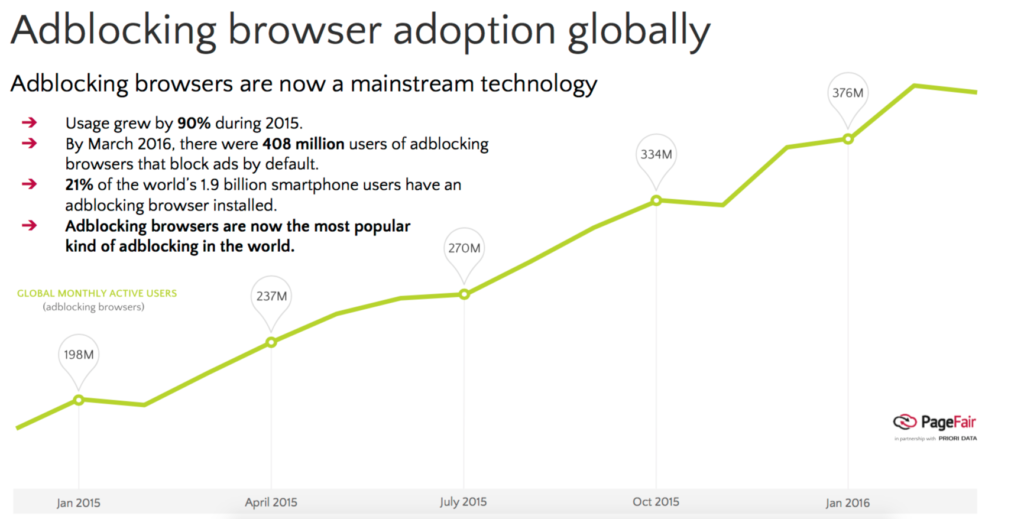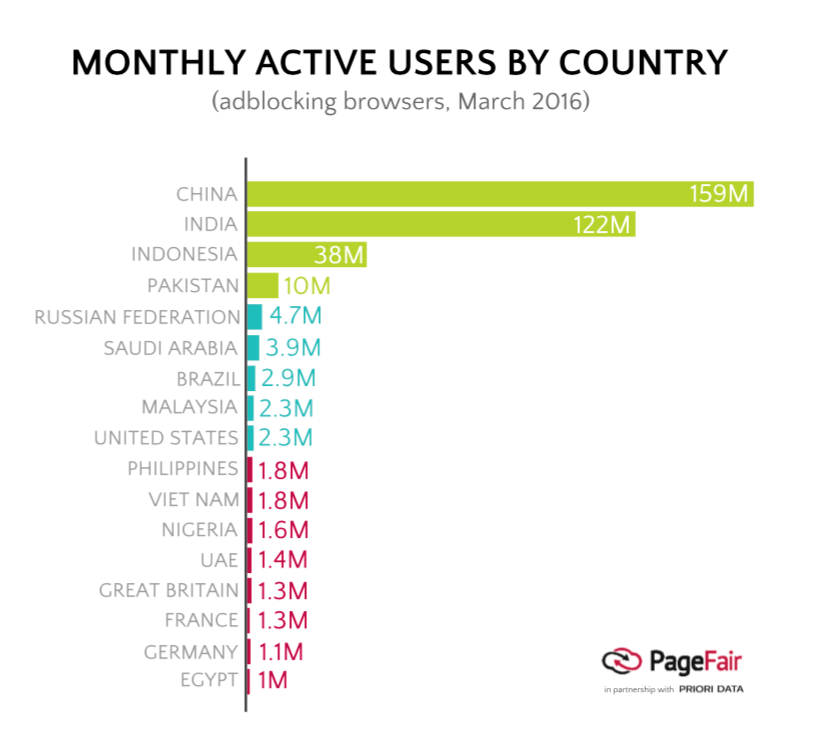Desktop users are utilizing some form of ad blocking at a high rate, but now mobile users appeared to have surpassed them. PageFair has compiled a new report that details how much it’s being used.
With assistance from Priori Data, PageFair’s report explains a number of factors, mainly why it’s being used so much. “People are installing ad block for different reasons, many of which are indisputably valid,” the company noted. “If the open web is to survive, these reasons must be fundamentally addressed.”
The following statistics were included in the report:
- At least 419 million people are using ad blocking services on smartphones. In fact, that number has eclipsed desktop ad blockers by nearly double, and it’s worldwide, with 36 percent of general smartphone users in the Asian Pacific blocking ads to some extent.
- Overall, 22 percent of the world’s 1.9 billion smartphone users are blocking ads.
- Ad blocking browsers have gained popularity, with 408 million people using them as of March 2016—a 90 percent growth (nearly double) from last year.
- 5 million content blocking apps have been downloaded on iOS devices.
- With 45 different ad blocking browsers available for download and iOS, a number of them provide users with options to save money on mobile data, a driving factor for downloading them in the first place.
- Ad blocking services are becoming popular with some partners. In December 2015, ASUS partnered with AdBlock Plus to provide an ad blocking browser on 30 million new handsets for release this year.

- The country that uses ad blocking browsers the most is China, with 159 million users. India is close behind with 122 million. Meanwhile, only 2.3 million consumers use them in the United States.

Several experts have taken note of the report, as well as its importance when it comes to mobile advertising.
“This research only amplifies our concern in the rise of ad blocking across digital media,” said Jason Kint, CEO for Digital Content Next. “The perception that all ads can be blocked is quickly becoming reality as awareness grows. Any channel of consumption is at risk at this point. We believe an industry-wide focus on creating a better consumer experience for the blocked web should be the first and only priority.”
“This new report highlights something we’ve been discussing in the industry for a while now: consumers are pushing back on mobile and online ads,” added Nancy Hill, CEO for 4A’s. “Now is the time for advertising professionals and marketers to take a hard look at ourselves to understand why consumers are not responding to these types of ads, and figure out how we can correct the issue to better engage with the consumers we’re trying to reach.”

